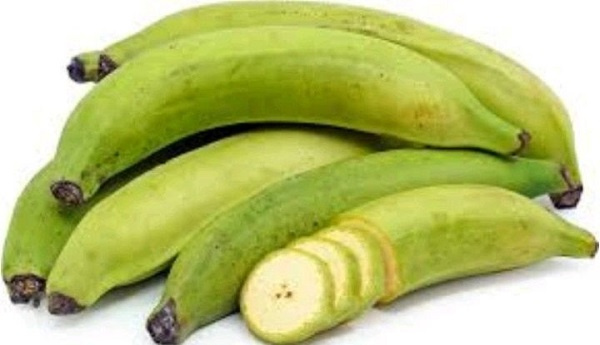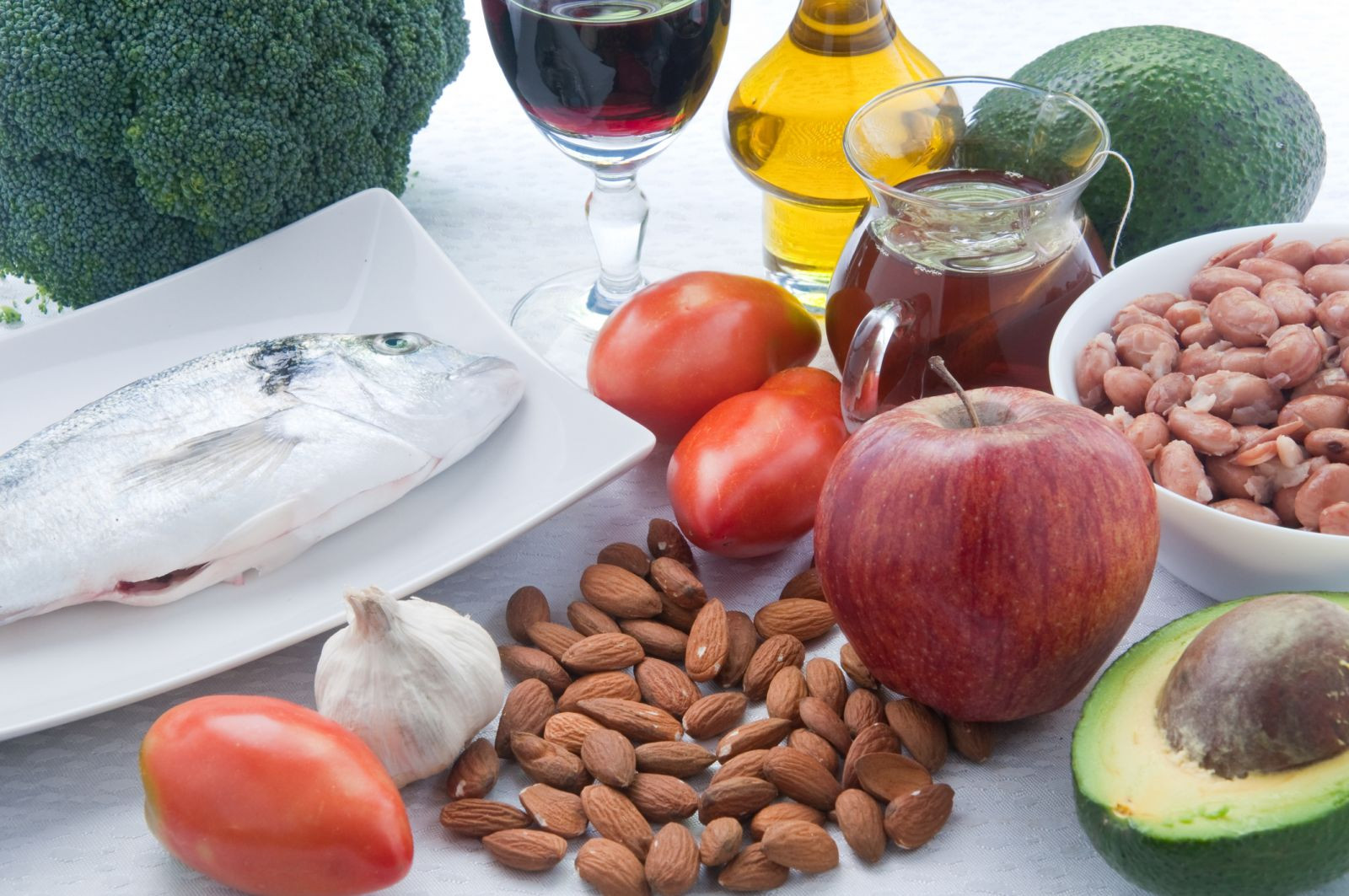How a starch diet-green banana and plantain a day can keep cancer away

But studies have proven that green Bananas and plantain diets may offer more than just a good source of fiber, Vitamin C, potassium, and other vitamins and minerals.
They are less sweet and contain less sugar than riper yellow ones. They also have more resistant starch, which may benefit blood sugar management and your overall health.
I know that when it comes to the health benefits of resistant starch – it is undeniably one of the most underrated, unknown, and yet-to-be-discovered functional foods in the world. However, not all resistant starches are made equal.
While only a handful of foods contain Resistant Starch many of them are in low quantities, can be destroyed through cooking, or come from genetically modified sources.
Resistant starch is simply starch that resists digestion in the small intestine. It reaches the large intestine and feeds the good bacteria that live in our guts. It turns out that this gut fermentation is really important to our metabolism.
Scientific studies are showing that we need to return to the historically consumed slow-to-digest resistant starch and eat far less easy-to-digest, soft, highly refined carbohydrates.
Resistant starch diet and cancers
A recent study by Matters et al.(2022) published in the journal Cancer Prevention found that starch found in green bananas (as opposed to ripe ones) and some other foods such as green plantain etc may potentially help reduce the risk of some cancers.
The 20-year trial conducted among 900 patients with Lynch Syndrome (LS), the most common cause of hereditary colorectal (colon) cancer, found that a daily dose of 30 grams of resistant starch for up to four years produced a “protective effect against non–colorectal cancer LS cancers.”
Professor John Mathers from Newcastle University, the leader of the study explained: “The dose used in the trial is equivalent to eating a daily banana: before they become too ripe and soft, the starch in bananas resists breakdown and reaches the bowel where it can change the type of bacteria that live there.”
He further noted that: “The protective effect of the resistant starch was “particularly evident” for upper gastrointestinal (GI) cancers, namely:
Stomach/gastric cancer (cancer in the lining of the stomach);
Bile tract cancer (cancer in the organs that make and store bile, a fluid made by the liver that helps digest fat);
Pancreatic cancer (cancer in the pancreas); and
Duodenal cancer (cancer in the first part of your small intestine)
Mathers stated: “This is important as cancers of the upper GI tract are difficult to diagnose and often are not caught early on.
“We think that resistant starch may reduce cancer development by changing the bacterial metabolism of bile acids and reduce those types of bile acids that can damage our DNA and eventually cause cancer. However, this needs further research,” he added.
Green banana and plantain
Green bananas naturally have a huge amount of resistant starch. Rhonda Witwer helped create a company to sell green banana powder as a supplement here in the United States. It can deliver up to 65% resistant starch when consumed raw, as the vast majority of the pulp in green plantains and green bananas are starch.
As it ripens, the starch turns to sugar and the resistant starch content is lost. I have not seen good data analyzing how resistant starch is in cooked green plantains and cooked green bananas, but it might be more than in other foods because there is less concentration of other components (proteins and fats) that physically interfere with the starch retrogradation.
We also need a lot of education on resistant starch as a health-promoting starch. Most people also believe that all starches are bad for you. I compare it to the historical perspective that people initially thought that all fats were bad until we figured out that there were good fats (i.e., omega-3 fatty acids). We are rapidly progressing to the same distinctions in carbohydrates – and resistant starch is one of the good carbs.
I think much of the benefit comes from the processing effects. Here’s a clinical study that was recently published that focused more on the levels of processing of foods. Resistant starch was a marker within the minimally processed food group (called the Microbiome Enhancer Diet).
In this clinical trial design, Corbin et al.(2020) describe as follows: Microbiome Enhancer Diet consisted of whole foods and four key drivers – dietary fiber, large food particle size, resistant starch, and minimal processing.
Microbiome Enhancer diet provided average 25.8 g fiber/1000 kcals and 10.3 g of RS/1000 kcals. Western Diet provided 6.5 g fiber/1000 kcal and 1.2 g RS/1000 kcals. They included resistant starch in their explanations of this study.
This study focused on the impact of less processed foods (not just resistant starch) on major health and weight biomarkers. This is going to be a big topic as a lot of people believe that ultra-processed foods are bad-for-you.
I’d rather focus on the positive aspects of the study and emphasize the inclusion and retention of resistant starch in the diet as a way to maintain healthy eating.
People who have had poor diets for a long time may have poor intestinal barrier integrity (commonly called a leaky gut). Dr. Martin Kriegel is doing good work showing that probiotic bacteria triggered inflammation and problems in an animal autoimmune model. He also showed that resistant starch fermentation helped heal the leaky gut and stopped the translocation of toxins across the gut barrier.
An animal study by Zegarra-Ruiz et al. (2019)also explained that resistant starch’s fermentation produces a lot of butyrates, which is believed to be one of the key factors in healing a leaky gut as butyrate is the preferred food for colon cells. I believe that most people have bacteria that can ferment resistant starch.
There are exceptions of course – people who have had repeated antibiotic treatments, who have intestinal diseases and dysbiosis that reflect imbalances, etc. Even if people have low levels of bacteria in their gut, the bacteria will rebound when they start feeding them again.
It only takes a few days for the bacterial composition to change when the diet changes. This also is consistent with several published meta-analyses showing that resistant starch lowers systemic inflammation in people – it probably does so by lowering the translocation of chyme components that leak across the intestinal barrier.
I usually recommend that people try resistant starch and other fermentable fibers before they supplement with probiotics. If they are not seeing benefits or believe that it is not fermenting (a complete lack of flatulence), then there is reason to suggest probiotics.
Yellow green and plantain
As they ripen, their carb composition changes. For instance, one study by Zhang et al.(2005) found that green or unripe bananas contain mostly starch, which makes up 70–80% of their dry weight. Most of that starch in green or unripe bananas is resistant starch, which is not digested in the small intestine. For that reason, it’s often classified as dietary fiber.
However, bananas and plantain lose their starch as they ripen. In the course of ripening, the starch is converted into simple sugars (sucrose, glucose, and fructose). Interestingly, ripe bananas contain only 1% starch, leaving the 99 percent in simple sugars.
Green bananas and plantain are also good sources of pectin. This type of dietary fiber is found in fruits and helps them keep their structural form.Duan et al.(2008) study explained that Pectin breaks down when a banana becomes overripe, which causes the fruit to become soft and mushy.
Two studies, (Wikiera et al. 2014;Birt et al. 2013) explained that the resistant starch and pectin in green bananas can provide several health benefits, including improved blood sugar control and better digestive health.
Resistant starch mechanism of action
One review by Falcomer et al.(2019) explained that when you eat a resistant starch diet in green plantain and Banana, they act like “fiber,” reducing glycemia (blood sugar levels that are too low or too high) and helping to prevent or treat type 2 diabetes as well as decreasing the risk of developing chronic diseases.
The starches are naturally broken down into glucose (blood sugar) when they’re digested. But since resistant starch is not digested, it does not raise your blood sugar levels.
Because they are also undigested “Gut health is improved as fermentation in the large intestine makes more good bacteria and less bad bacteria in the gut. Healthy gut bacteria can improve glycemic control.
Take home
Studies have proven eating resistant diets are good for our health. Apart from green Bananas and Plantain others such as fruits, non-starchy vegetables (carrots, broccoli, spinach) and beans also contain resistant starch.
Source: Prof Raphael Nyarkotey Obu





